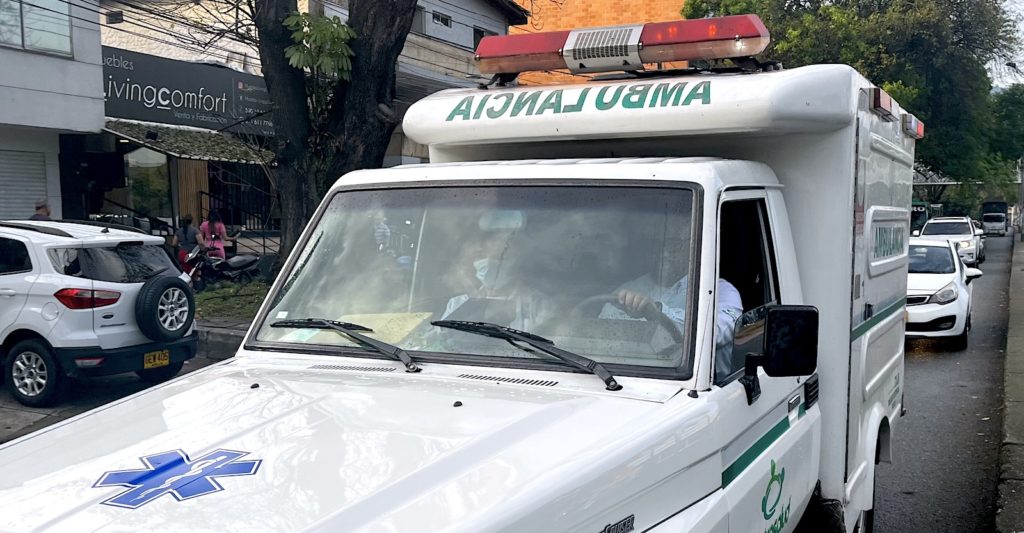
The ambulance service in Colombia urgently requires modifications amidst the ongoing health reform in the Colombian Congress. While not a direct focus of the new law, changes are anticipated due to the potential elimination of existing service provision contracts.
For years, the ambulance service has been turning into a business in which the desire to make money takes precedence over human life, taking into account the way the drivers are paid. With the important incentives provided by the payment of Compulsory Traffic Accident Insurance (SOAT) policy, many ambulance drivers participate in a kind of competition among themselves to take the largest number of accident victims to clinics and hospitals. For transporting a traffic accident victim, an ambulance owner charges 333,000 pesos. On average, other ambulance transfers cost between 70,000 and 90,000 pesos.
Similarly, it has been detected that some health centers pay commissions of between 20,000 and 50,000 Colombian pesos to drivers for each patient they refer to their centers. The political life of the country is held in tension between the health reform and the elimination of the SOAT.
The goal must be human life
Due to these factors, it is not uncommon to see three or even four ambulances at the scene of a traffic accident, after racing each other to be the first to arrive. “If you break your knee in the shower at home, it is worth X pesos to attend to that problem. If that same knee is damaged in the same way and severity in a traffic accident, fixing that knee is worth much more. Hospitals charge more to SOAT insurers”, says Gustavo Morales, former president of the Colombian Association of Integral Medicine Companies (ACEMI).
In a report on Colombian public television, some ambulance drivers anonymously stated that the owners impose shifts of 12 and even 24 hours on them. Other ambulance drivers deny that there is competition between them and that the ambulance driver simply goes out to earn a daily living, since they are paid per transfer and it is precisely traffic accidents that are the most profitable for them.
No transfers are not charged
A few days ago, in statements to Blu Radio, a paramedic from Bogota said that he earns 30,000 to 50,000 pesos for SOAT patients. “The issue of SOAT has always been seen, we have always worked on SOAT cases. Yes, the war has been going on since service provision work appeared because we do not earn a salary, we are paid per case done, per patient taken.”
In other words, ambulance drivers do not receive a fixed salary, but are paid per transfer, which explains their rush to pick up patients. “We have to pick up more or less between one and three patients a day to be able to make a living,” confesses the paramedic who works in ambulance relief.
Reforming SOAT
The Colombian government is working beyond health sector reform. In the words of Minister Guillermo Jaramillo, the SOAT reform is a priority for his ministry.
“I have stated very clearly that after the [health] reform is passed, the SOAT issue must be debated; what we have today of SOAT is not adequate, and the reform fell short on some issues that have to do with it. If we want a universal, equitable and fair system there must be a single regime,” said Jaramillo about SOAT.
This position of the Minister of Health reaffirms the government’s decision to reform the insurance, which, in recent months, in addition to the fight of ambulances for SOAT patients, has had to endure constant allegations of corruption regarding the evasion of this service, in addition to false insurance that complicates the situation of hospitals and insurers.
Government will not eliminate SOAT
President Petro himself expressed his opinion on the matter, on account of a fight between two ambulance drivers attending a traffic accident last October. “This dispute has to do with the fact that, being a traffic accident, the ambulances and the clinics that receive the patient will be paid by the SOAT, which represents higher profits than the EPS system….it is a fight for money and not for patient care,” said the Colombian President.
William Camargo, the Minister of Transportation, ruled out the elimination of the SOAT but gave his assurance that it would be reviewed. The politician also stated that the insurance discount for low displacement motorcycles “did not have the expected impact.”
According to the head of the portfolio “the SOAT resources have been used inadequately by the country’s health service users. What we are seeing is a symptom of the lack of responsibility of Colombians,” said the minister, who affirmed that the government is working with the idea of reforming, but not eliminating, the SOAT.
See all the latest news from Colombia and the world at ColombiaOne.com. Contact our newsroom to report an update or send your story, photos and videos. Follow Colombia One on Google News, Facebook, Instagram, and subscribe here to our newsletter.

